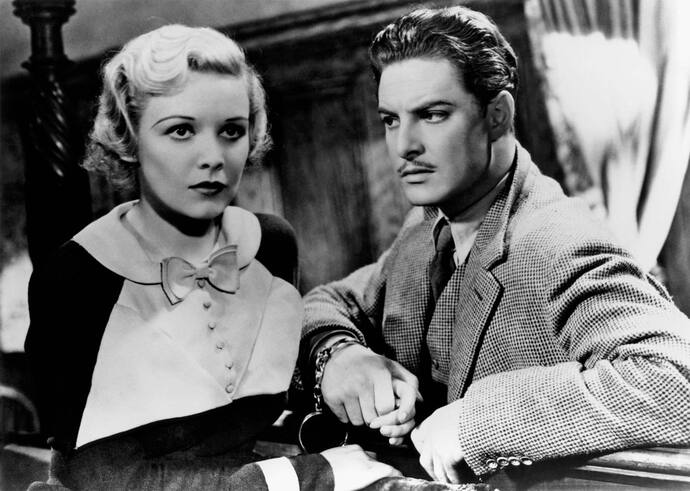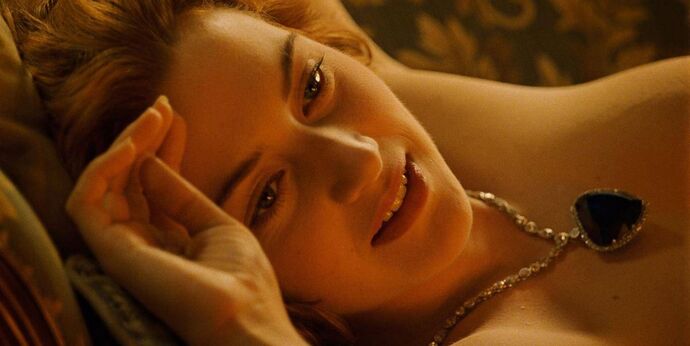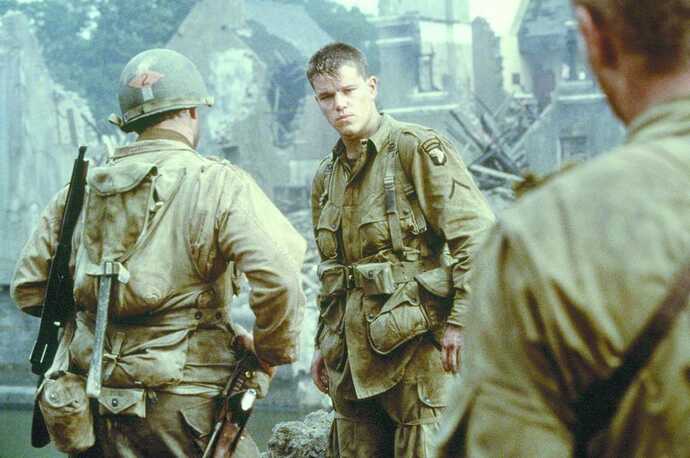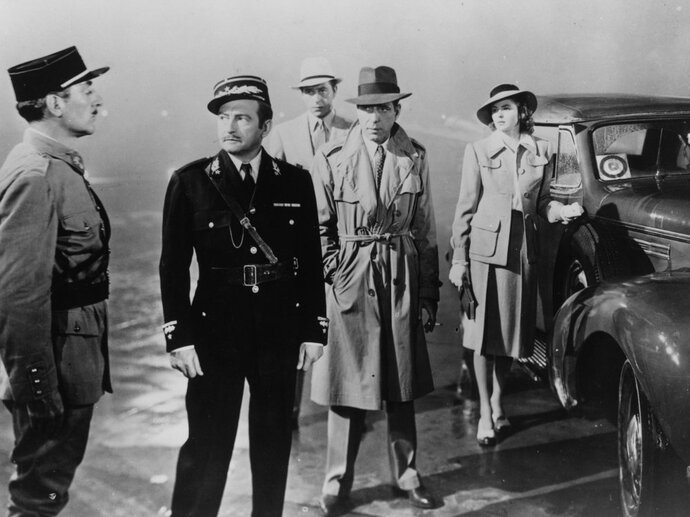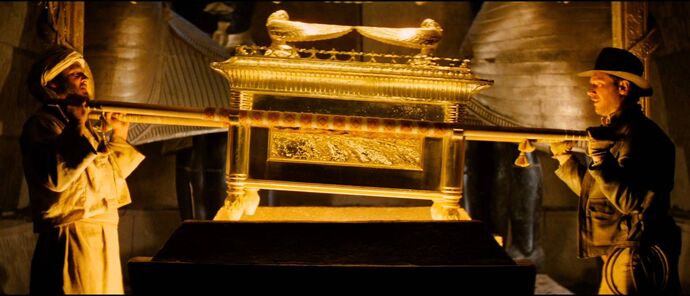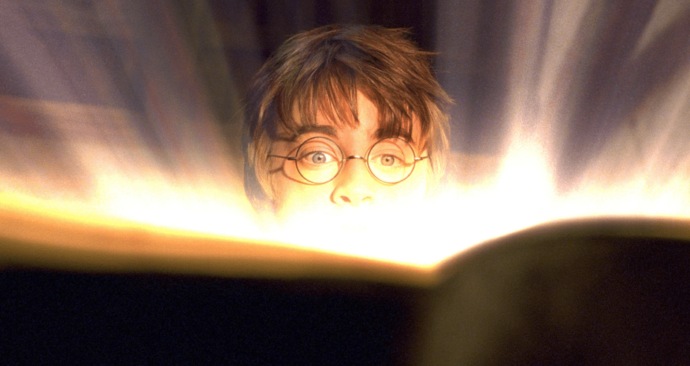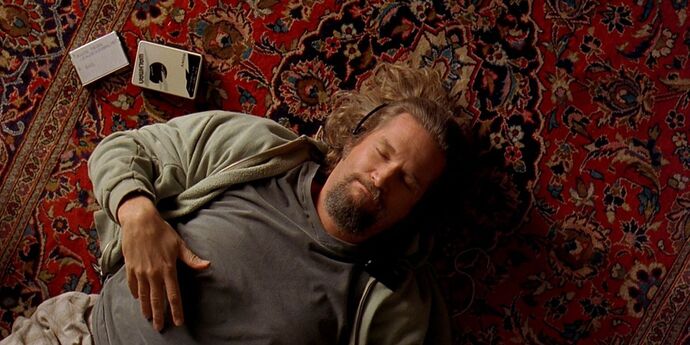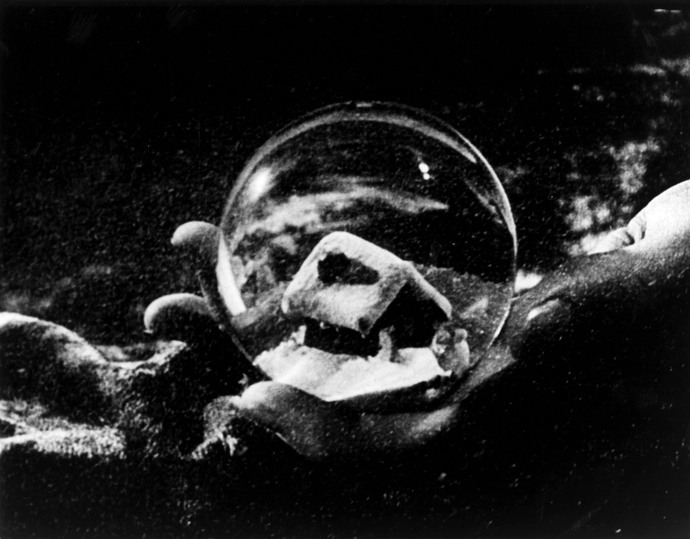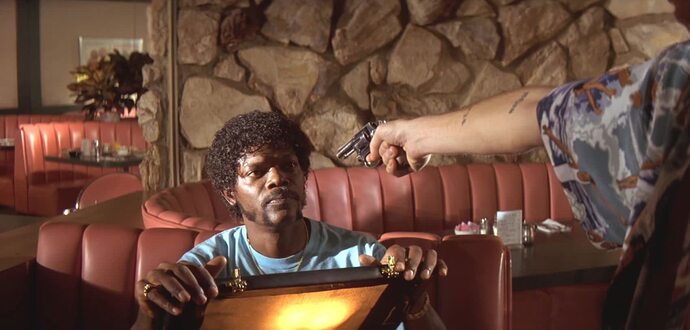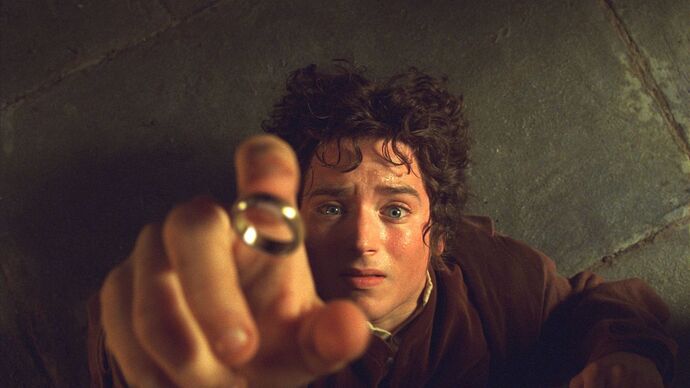Coined by the English screenwriter Angus MacPhail and popularized by Alfred Hitchcock, the term “MacGuffin” refers to a prop, object, or person that primarily exists to push the narrative forward. The movie MacGuffin is the central trigger for conflict and character motives. The actual MacGuffin object or person may not hold any significance or affect the plot on its own—the important thing is that it propels the character(s) forward. For example, the Marvel movies are full of MacGuffins. Most of them are driven by a nebulous inter-dimensional object that threatens to end the world and consequently spurs the superheroes into action. But MacGuffins can be more than that. Here are some of the best movie MacGuffin examples in cinema history!
10. Airplane Engine Plans (The 39 Steps)
When The 39 Steps came out in 1935, it universalized the use of MacGuffins in cinema—so it ought to kick off our list. Alfred Hitchcock’s thriller uses secret military information to push protagonist Richard Hannay (played by Robert Donat) from place to place. Hannay is wrongly accused of murder and on the run from a nationwide manhunt. Chased by the police, he uncovers the conspiracy of “The 39 Steps”—an organization of spies who collect secret information. Hannay tries to find this information to prove his innocence. However, it turns out to not be a physical document at all! Hitchcock explained in numerous interviews that the MacGuffin itself tends to hold little importance. Although it’s the coveted plans for an advanced airplane engine that generates the plot, the story itself is about an innocent man trying to clear his name. In essence, the MacGuffin is a superficial plot device that acts as a catalyst for conflict and drama (what the movie is really about).
9. The Heart of the Ocean (Titanic)
When you think of Titanic, you probably think of two things: Rose and Jack’s budding romance, and the action-packed sinking of the ship. The Heart of the Ocean (Rose’s fictional blue diamond) might be pretty, but it isn’t that important to the overarching narrative—which is actually about class-defying love and historical tragedy. But in the context of the movie, the Heart of the Ocean is what starts the story and ends the movie as it circles back to Rose. James Cameron’s historical epic stars Leonardo DiCaprio and Kate Winslet as the young, swooning couple, torn apart by the Titanic’s hitting of an iceberg. Years later, a 100-year-old Rose recounts her love affair to a bunch of researchers who are digging for the lost necklace in the ship’s wreckage. This MacGuffin is used by Rose’s malicious fiancee to frame Jack as a thief, and it’s what Rose uses to remember her lost lover. In the final scene, Rose releases the Heart of the Ocean back into the sea: a metaphor for her reunion with Jack in the afterlife.
8. Ryan (Saving Private Ryan)
Though usually a physical object, MacGuffins can also be characters themselves. Examples of this occur in the likes of Colonel Kurtz in Apocalypse Now or Doug in The Hangover. But one of the most iconic examples of a person MacGuffin is Private Ryan in the WWII war movie Saving Private Ryan. Steven Spielberg’s classic movie centers on a group of soldiers who are assigned the mission of finding a young private. Private Ryan’s three brothers have already died in combat, so the military has sent for Captain John Miller (Tom Hanks) to search out the last remaining sibling and save his mother from ultmost heartbreak. Ryan doesn’t actually appear until midway through the movie, yet the task of finding Ryan is what forces the characters to journey through their hellish war-torn surroundings. The movie isn’t actually about Private Ryan—it’s about each soldier’s own personal struggle to find honor and courage in difficult times.
7. Letters of Transit (Casablanca)
Michael Curtiz’s Casablanca is a classic example of an early MacGuffin. The brooding, mysterious Rick Blaine (played by Humphrey Bogart) is head-over-heels for Ilsa Lund (played by Ingrid Bergman) when she comes to visit his nightclub in Casablanca. The only problem is that she’s with somebody—a Czech resistance leader who’s being chased by Germans during WWII. Rick has the letters of transit that’ll get Ilsa and her husband out of Casablanca for good, thus escaping the Germans. These letters are what generate conflict in our protagonist’s mind, who must choose between his head and his heart. The MacGuffin is the only thing keeping Ilsa there, and also the very thing she needs to get out, but the movie is truly about Rick’s character as he sacrifices his own desires for Ilsa’s happiness as he hands over the letters and accepts that it will never be.
6. The Ark of the Covenant (Indiana Jones and the Raiders of the Lost Ark)
All of the Indiana Jones movies engage with a MacGuffin, but the best and most famous one is in the first installment: Indiana Jones and the Raiders of the Lost Ark. While Nazis are striving for world domination, archaeologist Indiana Jones (played by Harrison Ford) is out saving the day in his usual rugged and daredevilish ways. Adolf Hitler believes that the Ark of the Covenant—a sacred golden box that contains the two stone tablets of The Ten Commandments—will allow his army to become invisible (and therefore unstoppable). The Ark is given holy connotation, which weights Jones’ mission with religious importance. It’s what motivates him to not only to defeat the bad guys, but also face his vengeful ex-fiancee Marion (played by Karen Allen) and his biggest fear (snakes). At the end of the movie, Jones is forced to choose between the Ark and Marion. Although he tried to fight for the Ark’s release, his character development throughout the film means he’s finally able to let go and choose love.
5. The Horcruxes (Harry Potter)
The Horcruxes in the latter Harry Potter movies aren’t just one but seven MacGuffins that all work together. These MacGuffins are implied to exist throughout all eight movies, but the first one makes its appearance as Tom Riddle’s Diary in Harry Potter and the Chamber of Secrets. In order to defeat the evil Lord Voldemort, Harry Potter must destroy all seven Horcruxes. Each Horcrux is a physical object that contains a part of Voldemort’s soul. By splitting his soul like this, Tom Riddle was able to come back to life—but only as a cursed version of himself. To prevent him from ever coming back again, all of the Horcruxes must be destroyed so Voldemort is completely eradicated. We don’t find out about the significance of these Horcrux MacGuffins until the seventh movie, at which point Harry and his friends spend two whole movies hunting them down. These MacGuffins don’t have much screentime, but they drive most of the major plot points.
4. The Rug (The Big Lebowski)
We love this MacGuffin because it’s so stupid and yet so funny. The Big Lebowski is a cult classic stoner-flick that became so popular that it even sparked its own religion. “Dudeism” follows the philosophy of Jeff “The Dude” Lebowski, who coasts through life with a spliff in one hand and White Russian in the other. The other important thing about Jeff Lebowski is that he really likes his rug. When two men break into his house (mistaking Jeff for a different Lebowski) and pee on his rug, The Dude demands compensation. Jeff’s hunt for his beloved rug embroils him in an entire thriller narrative that the stoner doesn’t belong in—and that’s what makes it so funny. The Dude is hired to deliver ransom money over a kidnapping, but then another pair of thugs pee on his new replacement rug. This triggers the second part of the movie, where Jeff visits Lebowski’s daughter Maude, who admits the kidnapping was staged. Jeff just can’t seem to catch a break. And there’s that whole psychedelic dream sequence… but hey, “Life goes on, man.”
3. Rosebud (Citizen Kane)
Rosebud is one of the most famous, sacred, and ultimately pointless MacGuffins in cinema history. Orson Welles flexes his talent for smart, thought-provoking filmmaking with Citizen Kane, and his use of the MacGuffin is a large element in that. “Rosebud” is the last word spoken by newspaper magnate Charles Foster Kane before he dies. A journalist is assigned to uncover the meaning of this word, which has no obvious link to the man’s life. Through his investigations and interviews with people in Kane’s fascinating life, an intimate and curious portrait is painted—but even after everything comes to light, the propulsive question is never answered: what is Rosebud? The search for Rosebud is what drives the journalists to research who Kane was, his triumphs and defeats, his determination and corruption. This deep character analysis is what made Citizen Kane a cinematic landmark. In the end, the meaning of Rosebud is… meaningless. (We won’t spoil what it means!)
2. The Briefcase (Pulp Fiction)
Pulp Fiction is one of the most oft-cited movies when it comes to the masterful use of a MacGuffin: Quentin Tarantino’s crime drama famously implements a MacGuffin that viewers never get to see. As the audience, we know that The Briefcase is valuable. We know that whenever The Briefcase is opened, there’s a golden glow that shines onto the character’s face. But what’s inside The Briefcase? Ultimately, it doesn’t matter what’s inside—because that’s not the point. Our curiosity keeps us engaged. We’re eager to see what everyone’s chasing after. But Tarantino teasingly denies us that pleasure. As a known lover of cinema history and film theory, Tarantino’s use of the MacGuffin acts as an homage to the great Hitchcock. It serves no tangible importance to the plot; it simply provokes the narrative.
1. The One Ring (The Lord of the Rings)
The Lord of the Rings was written by J. R. R. Tolkien in the 1950s, but it was Peter Jackson’s illustrious movie adaptation that brought the epic story of The One Ring to visual life. Jackson’s trilogy follows the young hobbit Frodo Baggins as he journeys to Mount Doom, the only place where The One Ring can be destroyed. The One Ring is vital to the Dark Lord Sauron’s power, so it must be destroyed to save Middle Earth. The urgency of The One Ring’s destruction is what drives the plot through extreme circumstances: several large battles, an encounter with a giant spider, a run-in with Ringwraiths, thousands of Orcs, corrupt men and betrayal… All this over one little ring? Yup! And the entire story, from start to finish, revolves around this piece of Elvish jewelry—even if the cursed ring only plays a role in a handful of scenes. Read next: The Best Scenes in the Lord of the Rings Movies, Ranked
